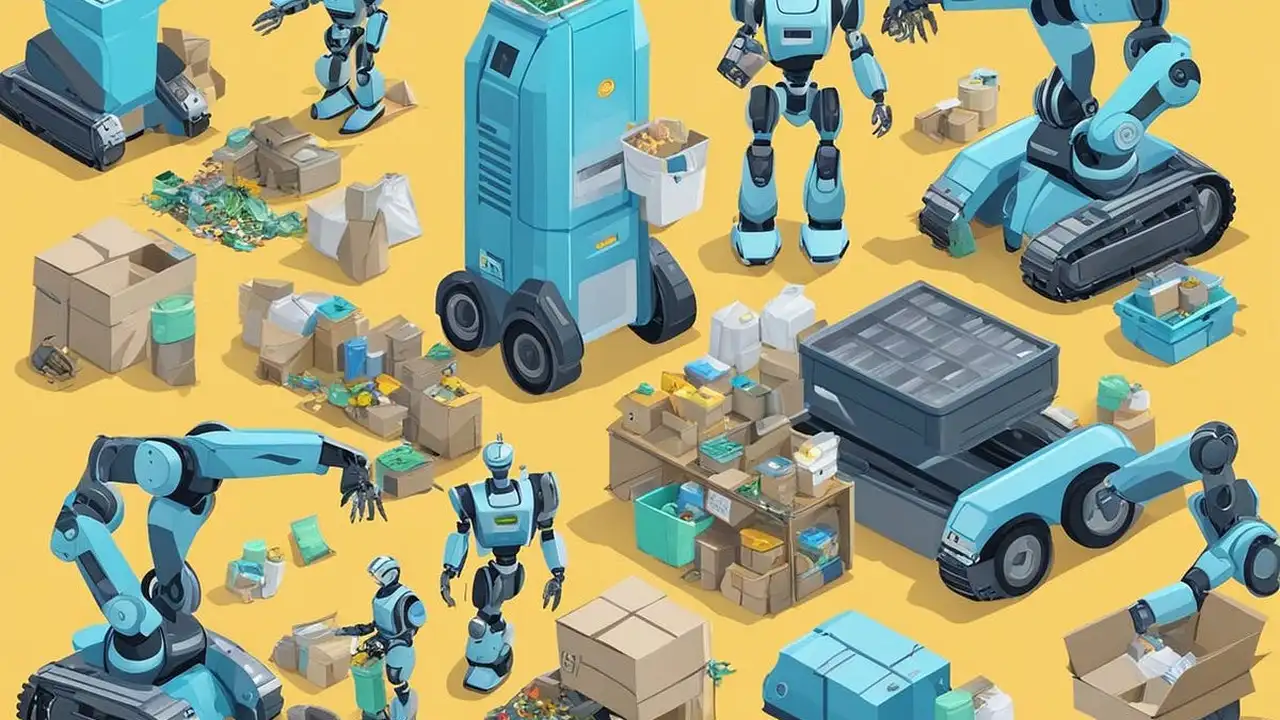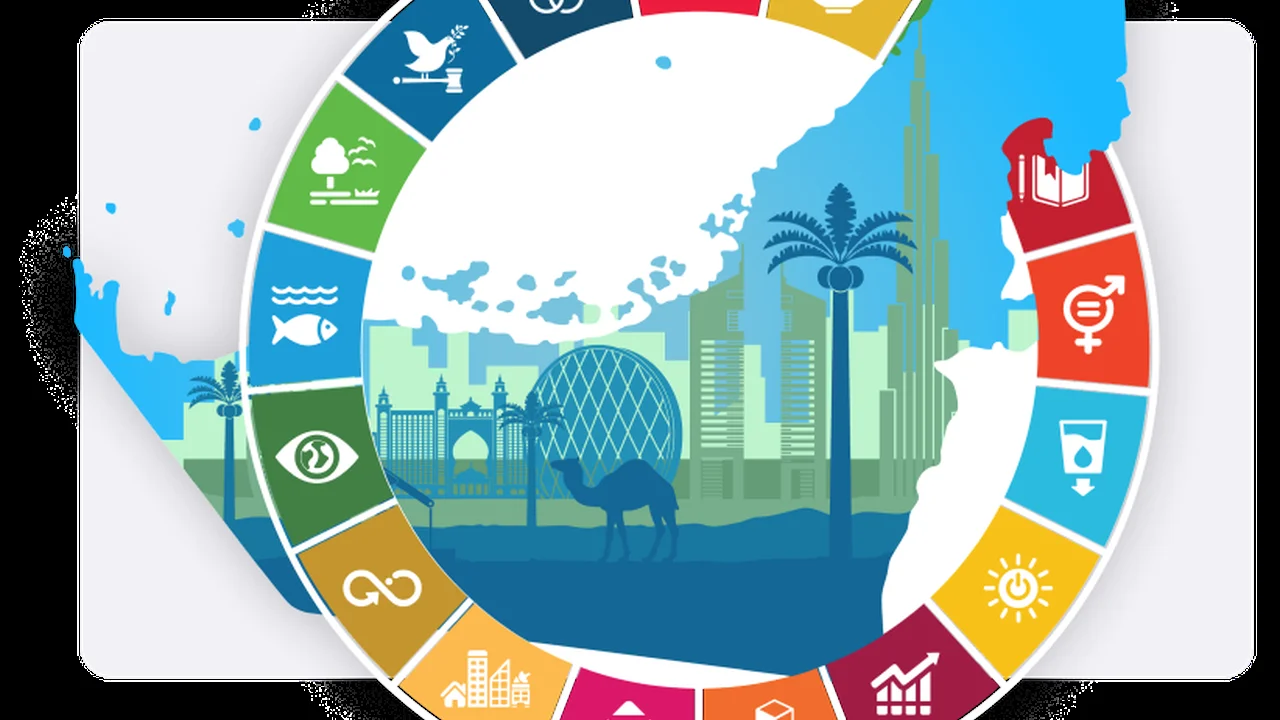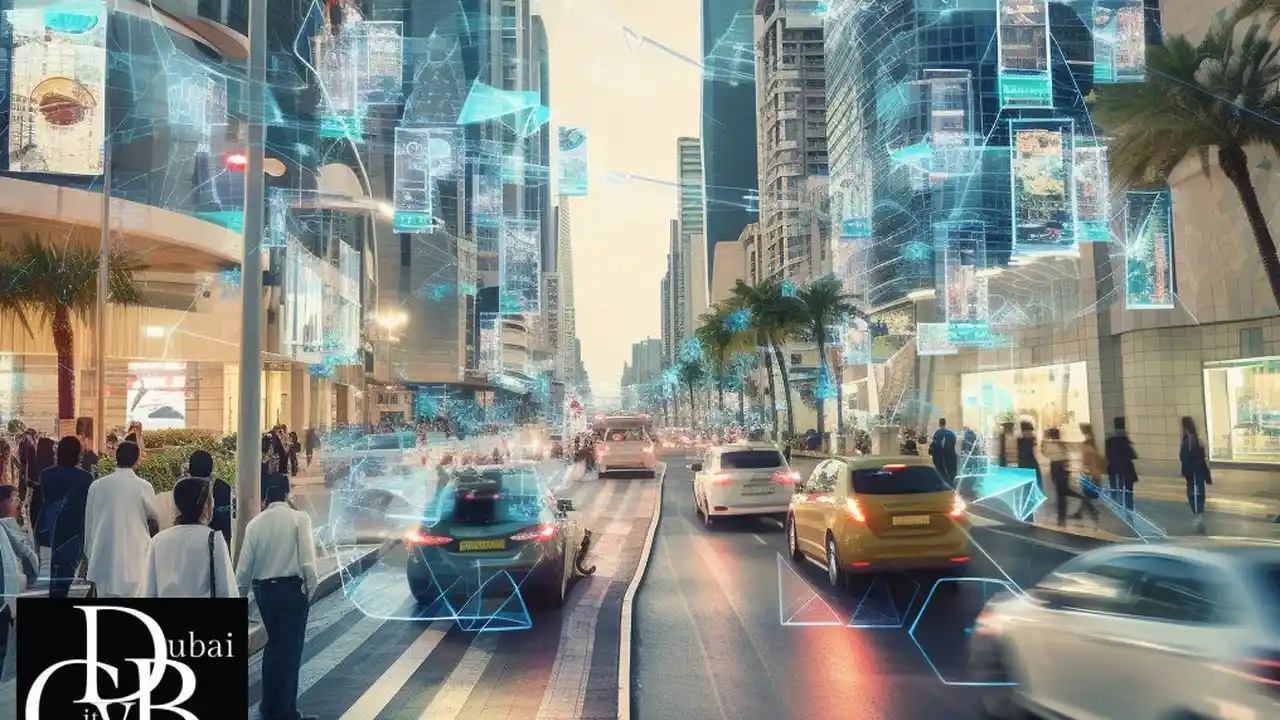7 Ways Robots Are Improving Waste Management in Sharjah

Robotics are revolutionizing the construction sector in Dubai and other UAE cities. This article explores how robots are being used to automate tasks, improve efficiency, and enhance safety on construction sites.
Robotics in Dubai's Construction Boom A New Era
Dubai, a city synonymous with architectural marvels and ambitious construction projects, is embracing robotics to further fuel its growth. The construction industry, a vital pillar of Dubai's economy, faces challenges such as labor shortages, demanding timelines, and the need for enhanced safety protocols. Robotics offers a compelling solution, promising increased efficiency, reduced costs, and improved worker safety. The city's commitment to innovation and technological advancement makes it a fertile ground for the integration of robotics in construction.
The Rise of Construction Robots Types and Applications
The field of construction robotics is diverse, encompassing a wide range of robots designed for specific tasks. Here are some key types of construction robots and their applications:
Bricklaying Robots Automating the Building Process
Bricklaying robots are designed to automate the repetitive and labor-intensive task of laying bricks. These robots use advanced sensors and algorithms to precisely place bricks, ensuring accuracy and speed. They can significantly reduce construction time and labor costs, while also improving the quality of brickwork. Companies like Construction Robotics and Fastbrick Robotics have developed bricklaying robots that are already being used on construction sites.
Concrete 3D Printing Robots Shaping the Future of Construction
Concrete 3D printing robots are revolutionizing the way buildings are constructed. These robots use a large-scale 3D printing process to create concrete structures layer by layer. This technology allows for the creation of complex and customized designs, reduces material waste, and speeds up the construction process. Companies like Apis Cor and COBOD are pioneering concrete 3D printing technology and showcasing its potential for building affordable housing and other structures.
Demolition Robots Safe and Efficient Demolition
Demolition robots are designed to safely and efficiently demolish buildings and other structures. These robots are equipped with powerful hydraulic breakers and other tools to break down concrete and steel. They can operate in hazardous environments, reducing the risk to human workers. Companies like Brokk and Husqvarna offer demolition robots that are widely used in the construction industry.
Welding Robots Precision and Speed in Metal Fabrication
Welding robots are used to automate the welding process, ensuring precision and consistency. These robots can weld steel and other metals with high accuracy and speed, reducing the risk of errors and improving the quality of welds. They are particularly useful for large-scale construction projects where repetitive welding tasks are required. Companies like Lincoln Electric and FANUC offer welding robots for the construction industry.
Inspection Robots Ensuring Quality and Safety
Inspection robots are used to inspect buildings and other structures for defects and damage. These robots can be equipped with cameras, sensors, and other tools to collect data and identify potential problems. They can access hard-to-reach areas and provide detailed reports on the condition of structures, helping to ensure quality and safety. Companies like Boston Dynamics (with Spot) and DJI (with drones) are providing robotics platforms adapted for inspection in construction.
Benefits of Robotics in Dubai Construction Projects
The integration of robotics in Dubai's construction industry offers numerous benefits:
Increased Efficiency and Productivity Streamlining Construction Processes
Robots can work continuously, 24/7, without fatigue, leading to increased efficiency and productivity. They can perform tasks faster and more accurately than human workers, reducing construction time and costs. Automated processes minimize errors and rework, further streamlining construction projects.
Reduced Labor Costs Addressing Labor Shortages
Robotics can help to address labor shortages in the construction industry by automating tasks that are typically performed by human workers. This can reduce labor costs and make construction projects more affordable. In a region that can sometimes face challenges with reliable labor supply, automation provides a stable alternative.
Improved Safety Minimizing Risks on Construction Sites
Construction sites can be dangerous environments, with risks of falls, injuries, and accidents. Robots can perform tasks in hazardous areas, reducing the risk to human workers. They can also be equipped with safety sensors and features to prevent accidents. Removing humans from dangerous tasks is a primary driver for robotics adoption.
Enhanced Quality and Precision Ensuring Accuracy in Construction
Robots can perform tasks with greater accuracy and precision than human workers, leading to improved quality and reduced errors. This is particularly important for tasks that require high levels of precision, such as bricklaying and welding. Consistent quality translates to longer-lasting structures and reduced maintenance costs.
Sustainable Construction Practices Reducing Waste and Environmental Impact
Robotics can contribute to sustainable construction practices by reducing material waste and energy consumption. Concrete 3D printing, for example, allows for the creation of structures with minimal waste. Robots can also be used to optimize material usage and reduce the environmental impact of construction projects. Dubai has a strong focus on sustainability, making robotics a natural fit for its future construction endeavors.
Challenges of Implementing Robotics in Dubai's Construction Sector
While the benefits of robotics are clear, there are also challenges to implementing them in Dubai's construction sector:
High Initial Investment Costs Justifying the Expense
Robots can be expensive to purchase and maintain, requiring a significant initial investment. Construction companies need to carefully evaluate the return on investment and justify the expense of adopting robotics. Government incentives and long-term cost savings can help to offset the initial investment.
Lack of Skilled Workforce Training and Education
The construction industry needs a skilled workforce to operate and maintain robots. Training and education programs are needed to equip workers with the necessary skills. Collaboration between educational institutions and construction companies is crucial for developing a skilled workforce.
Integration with Existing Processes Seamless Adoption of New Technologies
Integrating robots into existing construction processes can be challenging. Construction companies need to adapt their workflows and processes to accommodate robotics. A phased approach to implementation, starting with pilot projects, can help to ensure a smooth transition.
Regulatory Frameworks Adapting to Technological Advancements
Regulatory frameworks need to adapt to the use of robotics in construction. Clear guidelines and standards are needed to ensure the safe and responsible use of robots. Collaboration between government agencies and industry stakeholders is essential for developing appropriate regulations.
Robotics in Dubai Construction Case Studies and Examples
Several construction projects in Dubai are already using robotics to improve efficiency and safety:
3D Printed Office The Office of the Future
The "Office of the Future," a 3D-printed office building in Dubai, is a prime example of the potential of robotics in construction. The building was constructed using a large-scale 3D printer, demonstrating the feasibility of using this technology to create functional and aesthetically pleasing structures. It showcases Dubai's commitment to innovation and its willingness to embrace cutting-edge technologies.
Burj Khalifa Window Cleaning Robots Maintaining the Iconic Skyscraper
The Burj Khalifa, the world's tallest building, uses robotic window cleaning systems to maintain its gleaming facade. These robots are designed to withstand high winds and extreme temperatures, ensuring that the building remains clean and visually appealing. The use of robots for window cleaning highlights the importance of safety and efficiency in maintaining high-rise structures.
Dubai Metro Tunneling Robots Enhancing Infrastructure Development
Tunneling robots, also known as tunnel boring machines (TBMs), are used to excavate tunnels for the Dubai Metro expansion project. These robots can dig through rock and soil with high precision, reducing the need for manual labor and minimizing disruption to the surrounding environment. The use of TBMs demonstrates the application of robotics in large-scale infrastructure projects.
Product Recommendations Construction Robotics Solutions
Here are some specific product recommendations for construction robotics solutions:
Construction Robotics MULE 160 Bricklaying Robot
The Construction Robotics MULE 160 is a bricklaying robot designed to automate the process of laying bricks. It can lay up to 500 bricks per hour, significantly faster than a human bricklayer. It also improves accuracy and reduces the risk of errors. This robot is ideal for large-scale construction projects where speed and precision are critical.
Use Case: Building apartment complexes or large commercial buildings with consistent brickwork.
Pricing: Varies depending on configuration and support agreements. Contact Construction Robotics for a quote.
Detailed Information: The MULE 160 uses a robotic arm and advanced sensors to precisely place bricks. It can be programmed to lay bricks in a variety of patterns and configurations. It also includes safety features such as emergency stop buttons and collision avoidance sensors.
COBOD BOD2 Concrete 3D Printer
The COBOD BOD2 is a concrete 3D printer designed to create buildings and other structures layer by layer. It can print walls, foundations, and other structural elements with high precision and speed. This printer is ideal for creating affordable housing and customized designs.
Use Case: Constructing affordable homes, emergency shelters, or unique architectural designs.
Pricing: Significant investment, ranging from hundreds of thousands to millions of dollars depending on size and capabilities. Contact COBOD for specific pricing.
Detailed Information: The BOD2 uses a gantry system and a robotic arm to extrude concrete. It can print structures up to 12 meters high and 30 meters long. It also includes software for designing and controlling the printing process.
Brokk 110 Demolition Robot
The Brokk 110 is a demolition robot designed to safely and efficiently demolish buildings and other structures. It is equipped with a powerful hydraulic breaker and other tools to break down concrete and steel. This robot is ideal for demolition projects in hazardous environments.
Use Case: Demolishing buildings in urban areas, removing hazardous materials, or performing demolition in confined spaces.
Pricing: Approximately $150,000 - $250,000 depending on attachments and configuration. Contact Brokk for a quote.
Detailed Information: The Brokk 110 is remotely controlled and can operate in tight spaces. It is equipped with safety features such as a rollover protection system and a remote shutdown switch.
Product Comparisons Choosing the Right Robotics Solution
When choosing a robotics solution for construction, it's important to compare different products and consider your specific needs:
Bricklaying Robots MULE 160 vs Fastbrick Hadrian X
The Construction Robotics MULE 160 and the Fastbrick Hadrian X are both bricklaying robots. The MULE 160 is a smaller, more mobile robot that is ideal for smaller projects. The Hadrian X is a larger, more powerful robot that is ideal for large-scale projects. Consider the size and scope of your projects when choosing between these two robots.
Concrete 3D Printers COBOD BOD2 vs Apis Cor
The COBOD BOD2 and the Apis Cor are both concrete 3D printers. The BOD2 is a larger, more versatile printer that can print a wider range of structures. The Apis Cor is a smaller, more portable printer that is ideal for on-site construction. Consider the size and portability requirements of your projects when choosing between these two printers.
Demolition Robots Brokk vs Husqvarna
Brokk and Husqvarna both offer a range of demolition robots. Brokk robots are known for their power and versatility. Husqvarna robots are known for their reliability and ease of use. Consider the specific demolition tasks you need to perform when choosing between these two brands.
The Future of Robotics in Dubai's Construction Industry
The future of robotics in Dubai's construction industry is bright. As technology continues to advance, robots will become even more sophisticated and capable. We can expect to see more robots being used in a wider range of construction tasks, leading to increased efficiency, reduced costs, and improved safety. Dubai's commitment to innovation and its willingness to embrace new technologies will ensure that it remains at the forefront of the robotics revolution in construction.
Investing in Robotics Education and Training in Dubai
To fully realize the potential of robotics in construction, Dubai must invest in education and training programs to develop a skilled workforce. These programs should focus on teaching workers how to operate, maintain, and program robots. Collaboration between educational institutions, construction companies, and robotics manufacturers is essential for creating a robust and sustainable robotics ecosystem.
Government Support and Incentives for Robotics Adoption in Dubai
The Dubai government can play a key role in promoting the adoption of robotics in construction by providing support and incentives. These incentives could include tax breaks, grants, and subsidies for companies that invest in robotics. The government can also help to create a favorable regulatory environment for robotics by developing clear guidelines and standards.
The Impact of Robotics on Dubai's Architectural Landscape
Robotics has the potential to transform Dubai's architectural landscape by enabling the creation of more complex and innovative designs. Concrete 3D printing, for example, allows for the creation of structures with intricate curves and shapes that would be difficult or impossible to build using traditional methods. We can expect to see more unique and visually stunning buildings in Dubai as robotics becomes more widely adopted.
Ensuring Ethical and Responsible Use of Robotics in Dubai Construction
As robotics becomes more prevalent in construction, it's important to ensure that it is used ethically and responsibly. This includes addressing concerns about job displacement, data privacy, and the potential for bias in algorithms. Open dialogue and collaboration between stakeholders are essential for developing ethical guidelines and ensuring that robotics benefits society as a whole.
:max_bytes(150000):strip_icc()/277019-baked-pork-chops-with-cream-of-mushroom-soup-DDMFS-beauty-4x3-BG-7505-5762b731cf30447d9cbbbbbf387beafa.jpg)






